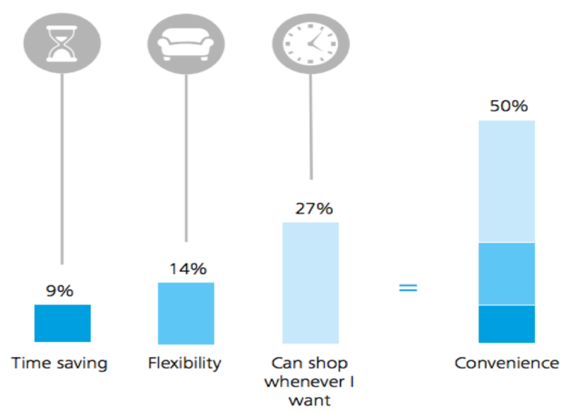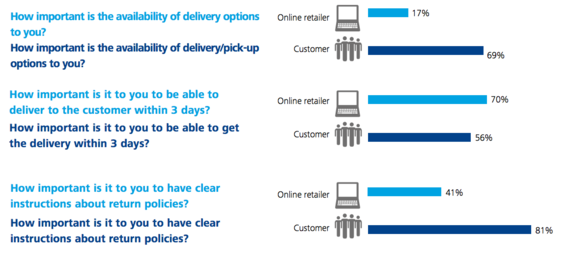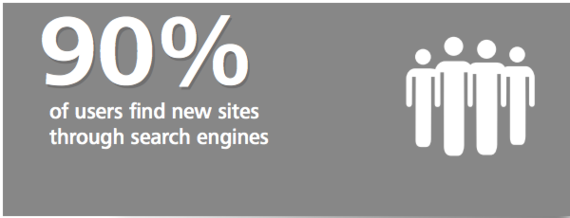One of the biggest challenges any retailer faces is moving their brand online. How can you take the trust and relationships you've built with your customers can convert that into an online offering? The benefits of retail, tangible goods that you can touch and feel, can be difficult to replicate for ecommerce entrepreneurs. How can you ensure your brand retains its value when you move online and continue to build your share of the market? The online market space offers businesses the opportunity to reduce operational costs, provides new promotional opportunities and gives the ability to reach new markets with your existing offerings. But how exactly do you do it?
It's not as simple as you might think, you can't just set up a WordPress site and start trading. If you fail to develop real synergies across your marketing channels and add real value to your customer offerings, you might destroy a real opportunity. Failing to implement your ecommerce channel effectively can damage your existing brand, cause conflict in your existing supply channel and even sabotage your future attempts to go online. How can the manager of a bricks and mortar store take the leap?
For many retailers, the marketing is becoming increasingly competitive. Not only do you need to ensure that your product offerings represent your customer's needs and wants, but you also need to beat out local, regional and even international competition. How can you ensure that you offer a high degree of value and achieve a competitive advantage? You might have already thought of the answer, ecommerce.
Traditional retail has lost its edge. While the predictions of the death of mom and pop store may have been premature, retailers no longer have a competitive advantage from their offerings. These day's international manufacturers can copy your product offering, attempts at price wars will only eat into your profits and promotional ventures will only deliver short term wins. The key to establishing a long-term strategic advantage is establishing effective marketing channels. Merging your offline and online presence effectively is incredibly difficult for competitors to replicate and can be the key to capturing your market.
Omni-Channel
The development of the Omni-channel is not just a buzzword, creating a multifaceted system of marketing channels is an excellent way to differentiate yourself as a brand. Retailers looking to move beyond their single or multi-channel distributors are capturing real customer value. If you can merge your online channel with your bricks and mortar store, you can develop a brand that attracts, converts and retains customers. The key to supply and distribution is reducing consumer costs. These costs aren't necessarily price; you need to consider your customers time and effort. The time spent searching for you online, the effort spent deciphering your website and your product offerings. You need to reach your customers with the right marketing tactics, then ensure your website is attractive, user-friendly and works.
Online experience
The number one thing to consider now is customer experience. In the contemporary market, it's no longer the quality of products or customer service you offer, but the experience you deliver. Customers are looking for a meaningful connection with their favorite brands, and the easiest way to do that is to ensure they have no barriers or costs associated with their consumption. Think outside of monetary costs here, reducing psychological costs such as effort, searching and learning can create barriers between your customer and their search for what they want to buy. Customers are going online, looking not only for low prices but convenience, and new experiences.
Developing your supply chain to respond to customer needs is not just a way to reduce costs, it's a real way to differentiate your offerings. There are so many different ways to reach your customers. The king of delivery has got to be Amazon; their innovative strategies such as same-day delivery has set themselves apart. Check out their new method.
Don't you have the infrastructure to support drone deliveries? No problem. There are so many different strategies available; you are only limited by your imagination. A great example of a simple solution is the click & collect model.
Click and collect is a supply chain model where customers can order their product online, then pick up in store. Customers want to be able to see the products features, compare the product and prices with other and then enter their payment details simply and securely. Many online brands have built their online brand around versatility and options; the key is to provide customers with the solution that suits their requirements. The more options you provide your customers, the more likely you are to achieve long term relationships bonds.
There are some companies currently looking to change the way they offer their products. Businesses are using click and collect to improve the way they interact with consumers and refine their supply chain's reflected demand. Online sales channels can give more insights into consumer behavior and offer marketers access to rich data for analytics. Click and collect increases the ease of purchase for customers, while also giving marketer's more information about their demands.
Let's look at two examples of click and collect, one from a small brand and another from a large corporation. Market position is going to have a significant impact on how you set objectives and establish a strategy. So let's consider two brands with very different levels of market capitalization. Woolworths, the Australian supermarket giant is looking to maintain its dominance of the market and reduce the number of customers defecting to newcomers Aldi. As a mass market brand, their click & collect mechanism will be unfamiliar to many shoppers and as a result, has clear instructions about how it works and how it benefits the consumer. For smaller brands in the ecommerce space, competing on price is often the only source of competitive advantage.
Unfortunately, competing on price will ultimately eat into your margins. Changing how you present your delivery, and pickup options can help to differentiate your offering. Look at the online retailer Peter's of Kensington's delivery page, some options are used, and the value proposition mixes price advantage with convenience. For many customers, the most important element of the marketing mix is likely to be price, but experimenting with different strategies can help you to differentiate from competitors. The key to finding the right combination is experimentation. Trial your supply chain mechanism and keep what works, but quickly cut things that don't. The key to effective marketing channels is adding value to how your target market perceives your offerings.
So you've got the right products, and you've established a hot delivery system. How do you talk to your market?
The Right Marketing Tools
How do you find your target market? The easiest way to speak to your key customer segment is to meet them where they hang out. Whether you are a start-up, or a seasoned retail brand looking to get online, firms need to ensure they're top of mind when customers start searching. From your experience, think about how you shop. Do you let Google auto-complete your questions? Your client does too. So it's time to invest in a real marketing strategy.
In highly competitive markets, many firms find themselves competing on price. This doesn't need to be the case. If potential customers can see you right at the beginning of their search for information, you're more than half the way there. There are so many different ways to reach customers through search, and optimizing your page to ensure you can be found on Google is essential. Search Engine Optimization (SEO) is one of the most effective mechanisms to achieve visibility in a crowded market and doesn't require a huge amount of technical nuance. There are also a range of marketing apps online for ecommerce if your target market is heavy smartphone users, investigating in-app purchases could be useful. Whether you invest in online marketing or develop a phone app, it's essential that you research your target market to deliver the most value. Achieving top of mind brand recall when a customer begins their information search is key. So investing in online marketing, ecommerce smartphone apps or revamping your website can make the difference when it comes to improving conversion rates and close sales.
Now once you've captured your market, it's essential that you convert. How do you stop people deserting their shopping cart at the final hurdle?
The Final Hurdle
So you've got great traffic, people are engaging with your website. But there's a problem.
If you've found that customers are deserting their shopping cart, you need to consider the way customers want to pay. You need to make the payment process as seamless as possible, any inconvenience or perceived effort will have customers jumping ship. You need to understand what customers want. Whether they want to use their credit card, PayPal account or maybe even bitcoin, you need to meet them more than halfway. You'll see your conversions increase and have a better relationship with customers.
Bottom Line:
Ultimately, the key to moving your bricks and mortar store online successfully is understanding what your customers want. Once you've made payments easy, optimized customer experience and meeting your customers where they want to see you, you're almost there. Make sure you continue to monitor your target market. Keep a keen eye on social media, forums and check out reviews of both your page and competitors. This will allow you to adjust your offerings and stay ahead of the curve to match the markets demand. Remember that your online brand is an extension of all the hard work you've put into your retail store!




